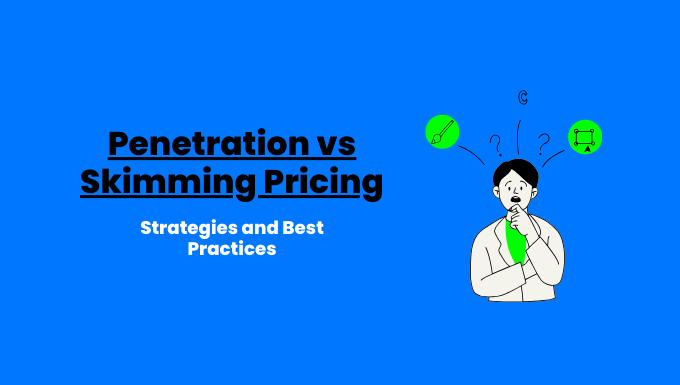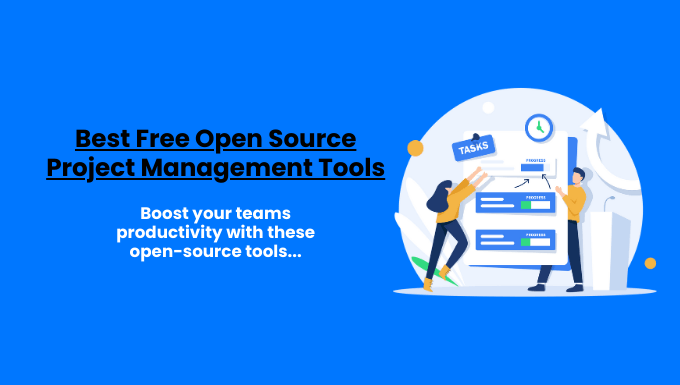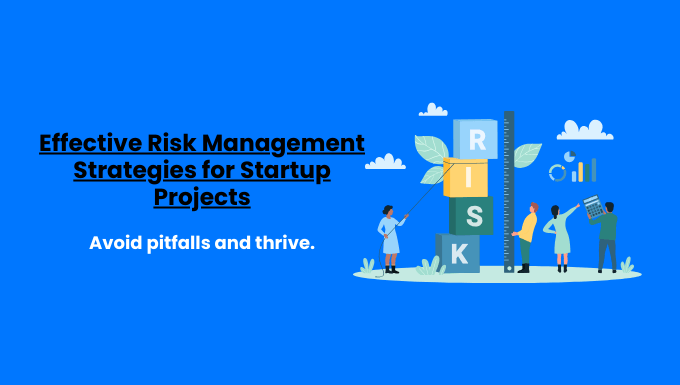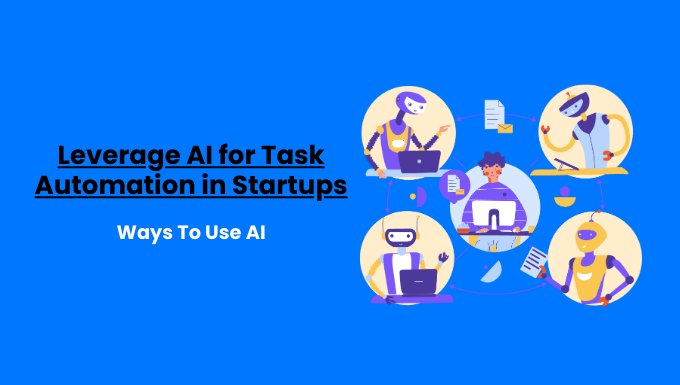Are you struggling to choose between penetration vs skimming pricing for your business?
A comparison of pricing strategies can make or break your market success.
Dive into the world of penetration pricing and discover how it differs from skimming. Learn which approach aligns best with your goals and target audience.
Ready to boost your bottom line and outsmart the competition? Let’s explore these game-changing pricing strategies!
Key Takeaways:
- Penetration pricing aims to capture market share quickly with low initial prices.
- Skimming pricing targets early adopters with high initial prices, gradually lowering over time.
- Choose penetration pricing for competitive markets and price-sensitive customers.
- Opt for skimming pricing when launching innovative products with unique features.
- Consider factors like market conditions, target audience, and competitive dynamics when selecting a pricing strategy.
A pricing strategy refers to the approach a business takes to set prices for its products or services, which may involve either skimming or penetration pricing depending on their objectives.
It involves considering various factors such as production costs, competition, target market, and value proposition.
The ultimate goal is to find the optimal price point that balances customer satisfaction and revenue generation.

Contents
ToggleImportance of Choosing the Right Pricing Strategy
Selecting the appropriate pricing strategy is crucial for the success of your business. It impacts revenue, market positioning, customer perception, and overall competitiveness.
Understanding the battle of Penetration vs Skimming Pricing strategies can help you make informed decisions aligned with your business objectives and target market, ensuring that your chosen strategy offers the advantages you seek.
Understanding Penetration Pricing
In the competitive realm of business, pricing strategies are paramount in attracting customers and securing market share.
One widely utilized strategy is Penetration Pricing, which contrasts with the skimming strategy by focusing on capturing market share quickly through low initial prices.
Let’s explore the ins and outs of Penetration Pricing and how it can be advantageous for your business.
Definition of Penetration Pricing
Penetration Pricing is a strategic approach where a company initiates with a low price for a product or service to swiftly infiltrate the market and amass a substantial customer base.
The primary goal is to entice customers with low prices, establish a firm presence in the market, and eventually raise prices once a loyal customer base is secured.
How Penetration Pricing Works
When a company employs Penetration Pricing, it typically introduces a product or service at an initial price below the market average.
This competitive pricing sparks interest in the market, draws in price-sensitive customers, and encourages them to try the offering. As more customers flock due to the attractive pricing, the company can rapidly expand its market share.
Here’s a concise breakdown of how Penetration Pricing operates:
- Initiate with a low price to attract a large customer base, a fundamental principle of the penetration pricing model aimed at customers who are willing to switch for a better deal.
- Quickly gain market share.
- Foster brand loyalty among customers.
- Incrementally increase prices once a solid customer base is established.
Examples of Penetration Pricing in Various Industries
Penetration Pricing has proven successful across diverse industries.
Let’s examine some real-world instances to grasp how this strategy can be effectively implemented:
- Technology Industry: Apple‘s launch of the iPhone in 2007 exemplifies Penetration Pricing, although they often use price skimming for later models as they establish market dominance. Priced at $499, this aggressive strategy enabled Apple to swiftly capture a significant market share and position the iPhone as a premium product in the long term.
- Retail Industry: Retail giant Walmart is renowned for its Penetration Pricing strategy, showcasing the differences between skimming and penetration as two pricing strategies. By offering everyday low prices on a wide array of products, Walmart has attracted price-conscious shoppers and emerged as a dominant player in the retail sector, embodying the principles of effective penetration pricing.
- Food and Beverage Industry: Fast-food chains like McDonald’s often leverage Penetration Pricing when introducing new menu items to cater to price-sensitive customers. By providing limited-time discounts and promotions on new products, McDonald’s drives customer traffic and bolsters sales.
- E-commerce Industry: Online retailer Amazon has effectively utilized Penetration Pricing to expand its customer base. By offering competitive prices and discounts on a vast product selection, Amazon has become a top destination for online shoppers globally.
Advantages of Penetration Pricing
Are you a business owner looking to spice things up in the pricing department? Well, you’ve landed in the right spot to explore how the right strategy in pricing can make a pivotal difference in your market positioning! Today, we’re delving into the world of penetration pricing.
It’s the dynamic approach companies take in applying pricing as a pricing strategy, utilizing both price skimming and penetration pricing to optimize market share and profitability.
It’s a bold strategy where you set your prices low to capture a slice of the market pie, illustrating how a low price can attract significant customer interest initially.
Let’s explore the advantages of this pricing tactic together.
1. Rapid Market Penetration
Imagine this: you’ve just introduced your shiny new product, and you’re eager to make a splash in the market, deciding between using price skimming or penetration pricing to achieve your goals. Enter penetration pricing!
By offering your product at a lower price point than your competitors, you can swiftly grab a substantial chunk of the market share. It’s akin to being the life of the party, attracting everyone’s attention because you’re offering the hottest deal in town.
2. Building a Customer Base Quickly
Who doesn’t appreciate a loyal customer base, right, particularly one cultivated through competitive pricing strategies that either offer a low entry point or cater to price-sensitive markets?
With penetration pricing, you’re not only attracting customers; you’re cultivating a tribe of dedicated fans who can’t resist your irresistible prices, fostering a sense of customer loyalty.
3. Discouraging Competitors
Competition adds spice to the business world! But what if you could reduce the pressure on your competitors just a bit?
That’s where penetration pricing struts in confidently. When you lower your prices and make a grand entrance into the market, your competitors might hesitate before encroaching on your territory.
Disadvantages of Penetration Pricing
When it comes to pricing strategies, penetration pricing stands out as a popular choice among businesses aiming to make a significant impact in the market.
However, this approach carries its own set of disadvantages that entrepreneurs should carefully consider before implementation.
Let’s delve into the drawbacks of penetration pricing that could potentially influence your business strategy.
1. Potential for Initial Losses
One significant disadvantage of penetration pricing is the potential for initial losses. By setting prices lower than competitors, businesses might find it challenging to cover their costs and generate profits in the early stages, highlighting the immediate financial implications of penetration pricing.
While this strategy can attract customers and boost sales volume, it’s crucial to evaluate the long-term financial implications of operating at a loss initially, a common concern in the penetration pricing model.
2. Risk of Devaluing the Product
Another drawback of penetration pricing is the risk of devaluing the product in the eyes of consumers. When customers get accustomed to lower prices, it becomes difficult to raise prices later without encountering resistance or losing market share.
Businesses must find a balance between offering competitive prices and preserving the perceived value of their products or services, often employing skimming or penetration pricing strategies to achieve this.
3. Difficulty in Raising Prices Later
One of the most significant challenges associated with penetration pricing is the difficulty in raising prices in the future, as initial low pricing measures set a tough customer expectation to shift. Once customers have become accustomed to discounted prices, they may be reluctant to pay more for the same product or service.
This can constrain a business’s ability to enhance profitability and may necessitate meticulous planning and communication when adjusting pricing strategies.
By being aware of these disadvantages, entrepreneurs can make informed decisions about whether penetration pricing aligns with their business goals and market conditions.
Understanding Skimming Pricing
In the competitive world of business, pricing strategy is a critical factor in determining the success of a product or service. One strategy that entrepreneurs often utilize is skimming pricing.
Let’s explore what skimming pricing entails, and how it operates, and examine examples across various industries.
Definition of Skimming Pricing
Skimming pricing is a strategy where a business initially sets a high price for a product or service and then gradually reduces it over time.
This approach is commonly employed when a company introduces a new and innovative product to the market, often using price skimming to maximize profits initially.
By starting with a high price, the business targets early adopters and customers willing to pay a premium for the novelty or exclusivity of the offering.
How Skimming Pricing Works
When a company implements skimming pricing for a new product, it typically follows this trajectory: an initial high price that is reduced over time through a price drop to expand its customer base.
This method capitalizes on the differences between skimming and penetration pricing strategies.
- Introduction Phase: The product is launched at a high price to capitalize on the initial enthusiasm and willingness of early adopters to pay a premium.
- Growth Phase: As the product gains traction and competition intensifies, the business may lower the price gradually to attract a broader customer base, demonstrating a strategy where an initial high price is reduced over time.
- Maturity Phase: Eventually, the price stabilizes at a level that aligns with the product’s value and market demand, reflecting the transition from a skimming strategy to more of a penetration pricing approach.
Skimming pricing allows businesses to maximize profits in the early stages of a product’s lifecycle before adjusting the price to appeal to a wider audience.
Examples of Skimming Pricing in Various Industries
Skimming pricing, a versatile and effective pricing method, is evident across diverse industries, demonstrating its broad applicability.
Here are some notable examples:
- Technology: Companies like Apple often employ skimming pricing for their new iPhone releases, setting an initial price for a new model that captures the highest segment of the market before adjusting. The latest models are initially priced at a premium to target tech enthusiasts and early adopters before gradually becoming more accessible.
- Fashion: Luxury fashion brands frequently use skimming pricing for their exclusive collections. By setting high initial prices, they cultivate a sense of prestige and desirability among fashion-forward consumers.
- Automobile: Car manufacturers apply skimming pricing to new vehicle models with advanced features. The high initial price caters to customers seeking cutting-edge technology and status, with subsequent price reductions making the cars more accessible to a broader market.
By strategically implementing skimming pricing, businesses can leverage consumer behavior and market dynamics to optimize their pricing strategy for maximum profitability and market penetration, adhering to the principles of dynamic pricing.
Advantages of Skimming Pricing
In the fast-paced world of business, pricing strategies are crucial for shaping a company’s success and profitability.
One strategy that has been gaining popularity is skimming pricing, characterized by an initial high price that is reduced over time to prevent customer demand and competitors from entering the market.
Let’s explore the advantages of skimming pricing and how it can benefit your business.
1. Maximizing Profits Early
Skimming pricing involves initially setting a high price for a product or service and then gradually reducing it over time.
This approach allows businesses to take advantage of early adopters’ willingness to pay a premium for new or exclusive offerings.
By targeting this segment first, companies leverage the right strategy to maximize their profits in the early stages when skimming starts.
- Example: Apple’s strategy of launching new iPhone models at premium prices before gradually lowering them to reach a broader market demonstrates the effectiveness of skimming pricing in maximizing early profits.
2. Perception of High Quality
Another benefit of skimming pricing is the perception of high quality it creates among consumers.
By setting an initial premium price, businesses signal to customers that they are offering a superior or exclusive product.
This can help build a brand reputation and establish the company as an industry leader.
- Case Study: Luxury fashion brands like Gucci and Louis Vuitton use skimming pricing to position themselves as high-end, luxury labels, attracting customers who associate premium pricing with superior quality.
3. Recovering Research and Development Costs
For companies that invest significantly in research and development to introduce innovative products, skimming pricing, with its strategy of an initial high price reduced over time, can help recover these costs more efficiently.
By charging a premium for cutting-edge products, businesses can offset the expenses incurred during the development phase and set the stage for future investments in innovation, adopting a skimming strategy that often sees initial prices higher.
- Statistic: A study by McKinsey revealed that companies implementing skimming pricing for new products can boost their profitability by up to 30%, highlighting the effectiveness of this pricing method.
Disadvantages of Skimming Pricing
When considering pricing strategies for your products or services, the skimming pricing strategy may seem appealing. However, like any business approach, it comes with its own set of drawbacks that entrepreneurs should take into account, especially when choosing between a skimming strategy and a penetration strategy.
Let’s explore the potential disadvantages of implementing a skimming pricing strategy, with an initial high price reduced over time, in your business.
1. Limited Market Reach Initially
One significant disadvantage of skimming pricing is its potential to restrict your market reach, particularly during the initial stages of a product launch. Setting high prices at the outset could deter price-sensitive customers who may be unwilling to pay a premium for a new or untested product.
This could result in slower adoption rates and impede your ability to attract a broader customer base, especially among price-sensitive consumers.
2. Encouraging Competitors
Skimming pricing can also attract competitors to enter the market more swiftly, though the initial high price may deter competitors from entering immediately.
When you establish high prices for your products, it signals to other businesses that there is a profitable opportunity to offer similar products at a lower price point.
This heightened competition can diminish your market share and exert pressure on your pricing strategy in the long term.
3. Potential for Lower Sales Volume
Another downside of skimming pricing is the potential for reduced sales volume, especially if your target market is price-sensitive. While high prices may yield higher profit margins per sale, they can also lead to lower overall sales volume, highlighting the importance of understanding price elasticity in their market.
This can impact your revenue forecasts and make it challenging to achieve economies of scale in production, especially without considering dynamic pricing as a strategic tool.
Comparative Analysis: Penetration vs Skimming Pricing
When it comes to pricing strategies, businesses often weigh the pros and cons of penetration pricing and skimming pricing.
These two strategies have distinct advantages and considerations based on factors like market conditions, target customer segments, revenue implications, and competitive dynamics.
Market Conditions Suitable for Each Strategy
Penetration Pricing is a pricing strategy that involves setting a low initial price to quickly capture market share, illustrating how penetration pricing allows rapid market entry.
It works well in the following scenarios:
- Entry into a competitive market with established players.
- Attracting price-sensitive customers.
- Generating buzz and interest in a new product or service often involves a carefully chosen pricing model, whether it’s skimming or penetration pricing, acknowledging the critical differences between these two pricing strategies.
Skimming Pricing is a pricing method that sets a high initial price before gradually implementing a price drop to adapt to market demands and the price-sensitive nature of certain consumer segments.
This strategy is ideal in the following conditions:
- Launching a high-end or premium product with unique features at an initial high price, appealing to customers willing to pay a premium.
- Targeting early adopters and customers willing to pay a premium, a tactic often employed in skimming pricing to capitalize on customer loyalty from the onset.
- Markets with limited competition and high demand for innovative products often face scenarios where skimming leads to initial price increases.
Customer Segments Targeted by Each Strategy
Penetration Pricing aims to appeal to a wide customer base by targeting:
- Budget-conscious shoppers seeking affordable options can be targeted with effective penetration pricing that allows for lower entry prices.
- Customers are open to trying new products at lower price points.
- Price-sensitive segments prioritizing value for money underscore the importance of strategies like penetration pricing for attracting customers who are willing to jump ship for lower prices.
Skimming Pricing Targets customers willing to pay a premium for exclusive or innovative products, including:
- Early adopters and tech enthusiasts seeking the latest innovations are often targeted by companies when skimming starts as a pricing strategy.
- Affluent consumers are interested in luxury or high-quality offerings, where skimming is often utilized to set prices higher initially.
- Customers value unique features and are willing to pay a premium.
Revenue and Profit Implications
Penetration pricing may initially yield lower profit margins but can lead to higher sales volume and market share over time. It helps businesses:
- Quickly penetrate the market and gain a competitive edge.
- Build brand loyalty and expand their customer base.
- Drive revenue through increased sales and repeat purchases by understanding the price-sensitive nature of your market and how a low price can attract broader segments over time.
Skimming pricing tends to offer higher profit margins initially but may limit sales volume.
However, it provides benefits such as:
- Maximizing revenue from early adopters and premium customers.
- Creating an exclusive, premium brand image.
- Allowing for price adjustments to target broader customer segments over time showcases how penetration pricing allows for strategic flexibility.
Competitive Dynamics
Consider the competitive landscape when choosing between penetration pricing and skimming pricing:
- Penetration Pricing: Effective in competitive markets, it can help businesses attract customers from rivals, potentially leading to price wars.
- Skimming Pricing: Suitable for markets with low competition and high demand for innovation, helping establish a premium brand image and differentiation.
People Also Asked
1. What is the main difference between penetration pricing and skimming pricing?
When considering pricing strategies, two common approaches often come to mind: penetration pricing and skimming pricing.
These strategies differ in their initial pricing approach and target customers.
- Penetration Pricing: This strategy involves setting a low price at the beginning to quickly enter a competitive market. The goal is to attract customers with an affordable price, gain market share, and build brand recognition. As the business grows, prices can gradually increase.
- Skimming Pricing: In contrast, skimming pricing starts with a high price targeting early adopters or customers willing to pay a premium for a new product or service. Over time, prices decrease to appeal to more price-sensitive customers.
2. Which industries benefit most from penetration pricing?
Several industries benefit significantly from penetration pricing strategies due to their competitive dynamics and consumer behavior, illustrating how this strategy offers an effective pathway to market leadership.
Here are some examples:
- Technology: Companies in the technology sector often use penetration pricing to quickly capture market share and outpace competitors.
- Retail: New retail businesses can leverage penetration pricing to attract customers away from established competitors.
- Telecommunications: Offering low initial prices helps telecom companies acquire customers in a saturated market.
3. How can a company transition from a penetration pricing strategy to a skimming pricing strategy?
Moving from a penetration pricing strategy to a skimming pricing strategy requires strategic planning and thoughtful execution.
Here’s how a company can make this transition:
- Market Research: Understand customer perceptions, willingness to pay, and the competitive landscape.
- Value Proposition: Highlight unique features or benefits that justify a higher price point.
- Gradual Increase: Increase prices gradually to avoid surprising existing customers.
- Target Audience: Identify and focus on customers willing to pay a premium for added value, highlighting the dynamics of skimming vs price sensitivity in market segments.
4. What factors should be considered when deciding on a pricing strategy?
Selecting a pricing strategy involves evaluating various factors to ensure alignment with your business objectives and market conditions:
- Costs: Factor in production, marketing, and operational expenses when deciding on your pricing method to ensure it aligns with your financial goals.
- Competitors: Analyze competitor pricing strategies and market positioning.
- Value Proposition: Define the unique value proposition of your product or service.
- Market Demand: Understand customer needs, preferences, and high price elasticity, for effective penetration pricing measures.
5. Can a small business effectively implement a skimming pricing strategy?
Although skimming pricing is often associated with larger companies and premium products, small businesses can also successfully adopt this strategy, benefiting from an initial price higher to recoup initial investment costs.
- Niche Markets: Target-specific niche markets willing to pay a premium for specialized offerings, considering the price-sensitive sectors that may benefit from a mix of price skimming and penetration pricing strategies.
- Unique Value: Emphasize distinctive features, quality, or customer service to justify higher prices.
- Brand Building: Invest in branding and marketing efforts to cultivate a perception of value and exclusivity, utilizing dynamic pricing as a pricing strategy to adjust prices in response to market demand.







